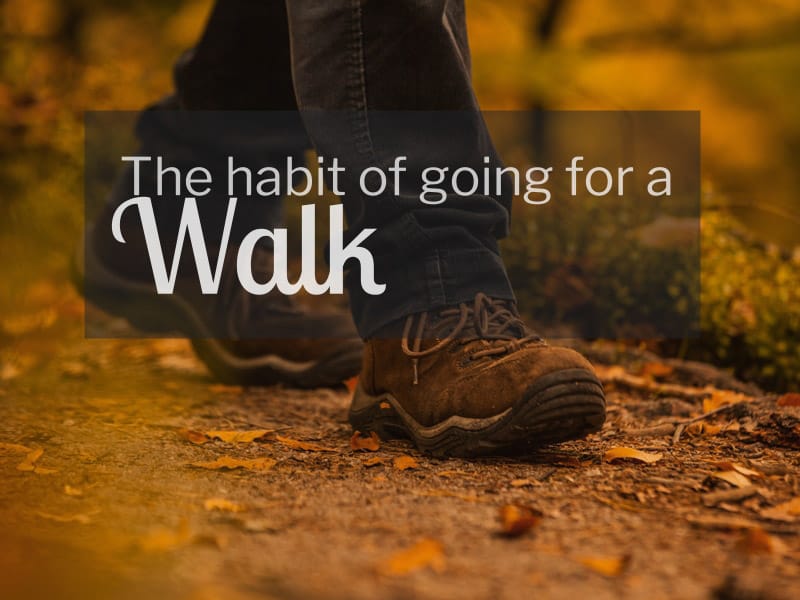When I turned 50 couple of years ago, know what I discovered? Having no routine or structure in your life is quite tiring mentally.
So back then I decided to take a new path…to actually work on creating clarity in my life by building daily routines.
Daily routine makes you more efficient, and it also reduces the time needed on deciding what to do next. Routine assists you to build good habits and to get rid of bad ones. It might seem illogical, but adding some structure to your daily life can set you free.
I feel that following my daily routines, and doing both mental and physical exercises, helps me build priorities, limit hesitation, keep track of goals, and make me healthier.
So now I’ve been following my routines for a couple of years. I take care of my sleep time, nap time, email time, exercise, dog walking and closing down my day.
From routine to habits
I think the most significant benefit of having a routine is that you will start doing things you may usually just postpone to the next day. With routine, those daily things, like exercise, will become your habits. You no longer try to persuade yourself not to do things. Instead, no matter what you feel, you just do it.
I have to admit though. It wasn’t easy to create those good, new habits. They are hard to form. Unhappily, bad habits are much easier to build, and they just form of one’s own accord.
One notable thing – what works for someone else, might not work for you. Test and try new habits and see how they work for you.
If you get stuck in a problem
When you start something new, you might get overwhelmed, and stuck at the beginning. Don’t try too much at once. You can start small. For example, walk through your local shopping mall trying to find ways to apply new ideas to your routines.
Get a breather. Take a break, a short walk and get inspiration from non-work related matters.
When I’m facing a problem, I go for walking, or jogging, in the woods. That helps me to find new perspectives on the issue.
With that being said, one of my most practical problem-solving tactics is to go for a walk every day, or at least more than every other day.
It’s so easy tactic that anyone can start implementing it right away.
I’ve found it in the last couple of years. Let me explain this little secret.
We all have times when we get stuck on an obstacle. We know, or hope, that there’s an easy solution out there. But easy answers are hard to find. When we feel that we are stuck, just by trying to force ourselves to solve the problem doesn’t do much good.
We can always try harder, think more in-depth, and keep working the problem away. Sometimes that strategy works. But more often, the perfect solution comes sometime later. Later, when we’ve moved on to something entirely else, and don’t try to force ourselves anymore.
So a much more powerful tactic in those circumstances is to get up and walk. Ideally go outside for a short walk.
Why taking walks can be so helpful?
There are a couple of reasons, how a short walk can be your number one problem-solving tool.
Getting into the habit of going for a walk helps you release a lot of the tension you’re holding if you are in a stressful situation. For example, if you spend long days at your desk, you will benefit from the exercise and fresh air.
It also helps the brain to get your blood moving. The fresh air allows you to absorb more energy and helps clear your head. In short, your mind will start to perform better. You get more oxygenated blood into those brain cells.
But there’s something deeper here as well in the form of how we “think.”
We do it in two different ways. Conscious level is the first one. That’s when you actively try to find a solution.
The second is the subconscious level. It’s the kind of thinking and “brain power” that you’re generally not aware of. You notice it, when you have a sudden thought, that just might be the perfect resolution to the problem that you couldn’t solve at the conscious level.
You can think those moments as “light bulb moments.” But they don’t come out of thin air. Instead, our minds have been subconsciously working whole the time. The idea is then moved into the conscious mind when it’s entirely built up.
Walking supports this subconscious thinking. While you’re out walking, enjoying the sunshine, listening to the birds, and smelling the flowers, your unconscious mind takes over the work on your unresolved problem.
By the time you get back, don’t be surprised if you have some new insights and ideas that get you closer to solving the issue.
Give your unconscious mind a try by going for a walk the next time you feel stuck or can’t figure something out.



